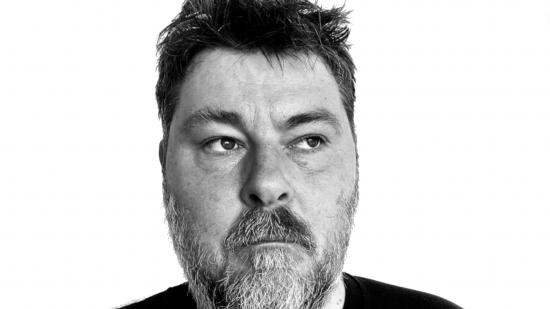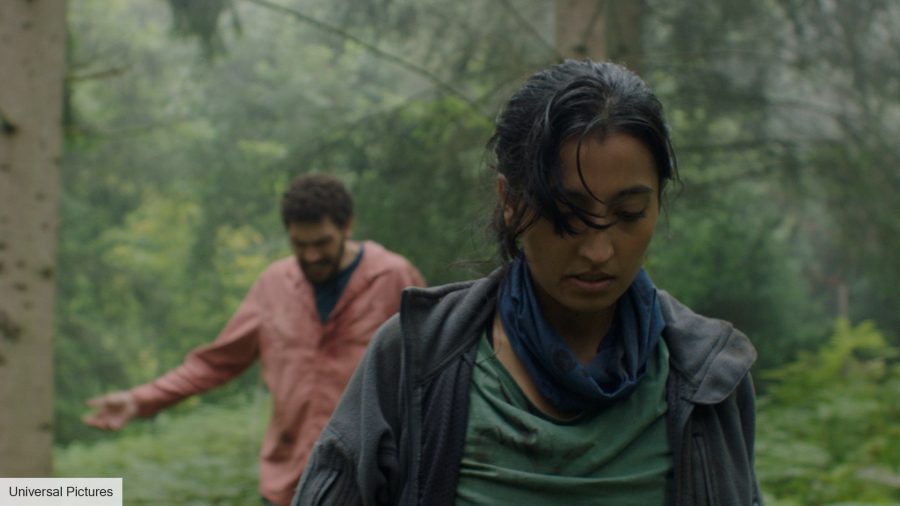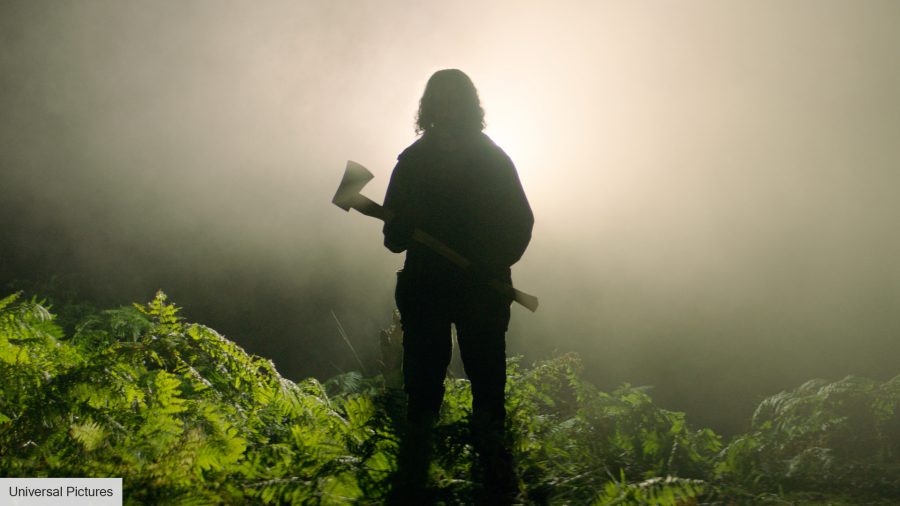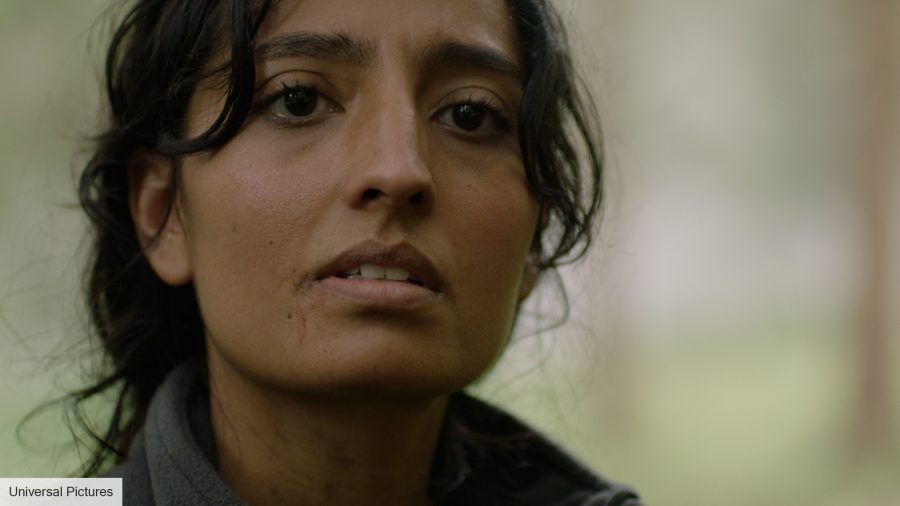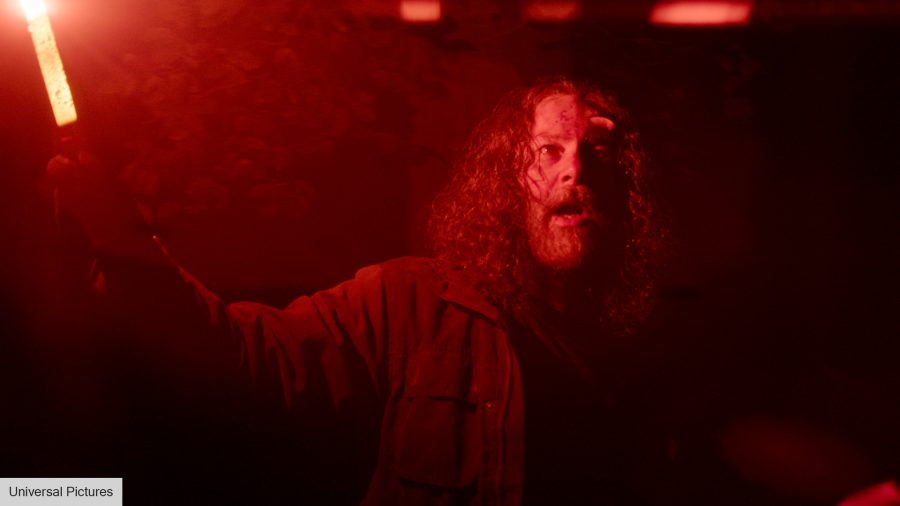Ben Wheatley has made a name for himself in recent years as one of the UK’s most talented filmmakers. Nominated for numerous awards over the years, Ben’s films have become known for their off-beat humour, grisly themes, and biting satire.
It’s no surprise then that Ben’s used his new film In the Earth to give us his unearthly take on 2020’s historic global pandemic and the resulting lockdown. Set during a global pandemic (the movie never specifies if it’s COVID-19), the film uses the story of two people (Joel Fry and Ellora Torchia) lost in the woods and being hunted by a maniac (Reece Shearsmith) to highlight the impact of isolation, the anxiety living through a pandemic causes, and the dangers of not living in harmony with nature.
Written and directed by Wheatley, the film is a kaleidoscopic nightmare, full of haunting visuals, disturbing characters, and at least one oddly funny amputation. With all this going on, we leapt at the opportunity to chat to Ben about the film and get to grips with this bizarre but gripping movie.

The Digital Fix: Hi, Ben. Let’s start with the obvious question, what have you got against Joel Fry’s left foot?
Ben Wheatley: Well, nothing personally, but against the character, well you know, I’m always on the side of the characters as much as possible. I’m not punishing them for no good reason, but it’s more like what have I got against the audience.
That’s probably a better way of putting it.
Yeah. Which is part and parcel of the ride of the horror film, isn’t it? It’s like we’re going to make you watch, look at things you don’t want to look at, and feel things you don’t want to feel, but you really do want to feel secretly.
Aside from the rather disturbingly realistic gore, the film deals with obvious horror tropes like isolation, loneliness, and the impact that they can have on mental health. But, were those themes a direct result of lockdown?
Yeah. It was all part of a thing of trying to deal with feelings of what was going on in my own life and trying to process lockdown.
Need cheering up? Check out our best comedy movies list
But also, it was about trying to process the bigger picture of what had been happening in the lead-up to it. So partially, it’s about the lockdown, but partially it’s about the kind of erosion of truth and narrative as a weapon, and all those things that have been happening and played out over the last year or so, and we’re still dealing with.
And I kept thinking about this weird thing of like the what is the things that make humans unique? You know? And it’s kind of this power to take random things and turn them into stories, and then use those stories to make other people do things.
It’s a kind of meditation on the dangers of narrative from the ironic position of a film.
It’s funny you mention the idea of taking random things and forming a narrative. That’s sort of where folklore comes from, and In the Earth has a real folk horror vibe to it. We’ve recently seen a boom in folk horror subgenre, with films like Midsommar, The Ritual and The Witch. Why do you think we’ve seen such a resurgence in this genre?
It’s probably cyclical, you know? What had happened is that a lot of the movie monsters had been rehabilitated so that they became friendly. And once you make sympathetic vampire films, sympathetic monster films, sympathetic zombie things, then you’ve killed off all your monsters and people look to the things that were fresher and scarier.
I think what you’ll find is probably there’ll be peak folk-horror and then we’ll be back to the vampires and all those kinds of creatures. There’ll be refreshed in some way.
But I think that’s generally kind of what happens. This is where folk comes from in the first place. It’s a ’70’s sub-genre, isn’t it effectively that’s come back around. The same as Slasher as well. You know, the Slasher goes away, and then comes back, and goes away and comes back again.
So you’re saying if we ever see a Twilight-style Wicker Man film then it’s time to move on from horror. You’ve touched on similar topics to those explored in In the Earth before in the past with Kill List and its use of occult symbols and the world of the occult, Why do you think these things frighten us so much?
Kill List was something that I’d come up with from thinking about my own primal fears and things, nightmares that I’d had. And speaking for myself, I would say that what’s scary is that it’s an organization and it doesn’t like you. And you don’t understand what their goals are, but they-they have goals.
Ghouls and ghosts? No thanks I prefer the best action movies
That’s is very different from like a maniac or a vampire or a supernatural creature. It’s got the kind of whiff of bureaucracy about it, but it’s also vicious and also calling back to and certainly in Kill List, an unspecified religion, which we were very careful to not say, “Oh, it’s pagans or whatever it was.”
We wanted to make sure that we weren’t doing that thing of othering some other religion. It was, it’s purely fictional. And the same with In the Earth, all the folk in [the film] are all made up. But that’s important because folk[lore] is kind of made up. There aren’t witches, that’s not true. You know, this stuff isn’t real, it just has the patina of reality to it in a way.
Obviously, this was a lot smaller production than your last two movies, Rebecca and Free Fire. What did you find the advantages were of working with such a small crew?
So you jumped over Colin Burstead there.
Oh, I did. Of course. Sorry about that.
Which is a low-budget movie, you see? It’s like, if you look at the pattern it’s every other film kind of. So it goes back and forth. And there’s that thing of, I know people talk about doing one for them and one for me, it’s more like if you’re setting up a bigger budget thing and it goes down for some reason, then to fill that time, you step back into a position where you can get something financed easier, which would be a lower budget thing. So that’s what I tend to do. So if there’s a bigger film, that’s not happening, then I’ll make a smaller film going forward.
When I was younger looking at stuff, you think why are people going backwards and forwards in budget? Is that because of some kind of employment problem or whatever? But for me, I liked doing low-budget stuff.
I really like it, it’s weird, it’s counterintuitive, but there’s a lot of freedom in low budget [movies] that you don’t have when you have more money.
Speaking of bigger-budget films, your next film, the Meg 2 I believe the author of the Meg series has said that they’re going to try for an R-rating with that film. Is there anything you can tell us about that?
Nothing I can tell you about that. No, I don’t know.
You don’t know. Okay, well, let’s go back to In the Earth regarding the kaleidoscopic visions we see throughout the movie. What was the process for making those? Did you work with the cinematographer to develop them?
Yeah, I mean, this is one of the things about COVID is it gave us a lot of time to prep, you know. We had five months of prep, which is a huge amount on a movie of this scale. So Nick Gillespie and I did lots of tests with oil and water, crystals, and shooting through different lenses and all sorts of stuff, so we had months of that.
Like interesting visuals? Best animated movies
It’s kind of, it’s written into the script to a degree, but it was a lot of experimentation as well. We had a whole day of shooting through tanks of dye and, projecting things through water and all that kind of stuff.
In the Earth hits cinemas on June 18, with previews on June 17. While you wait why not check out our list of the best horror movies.
